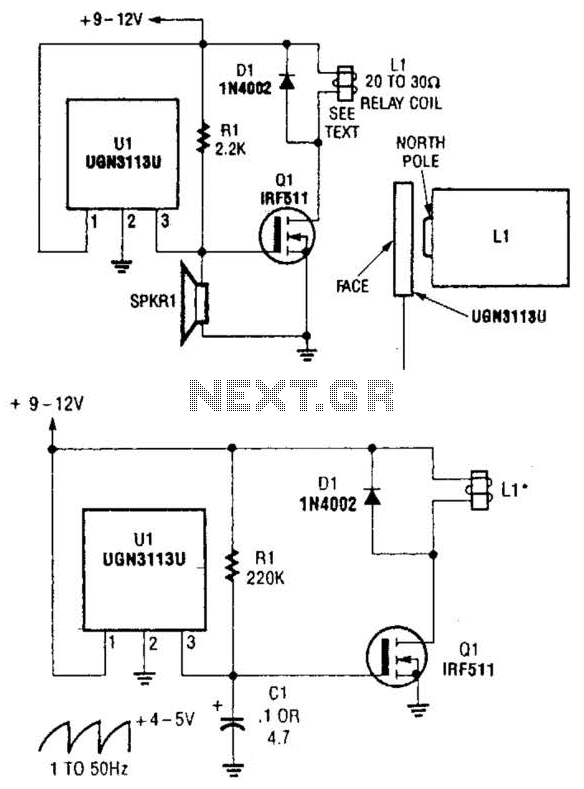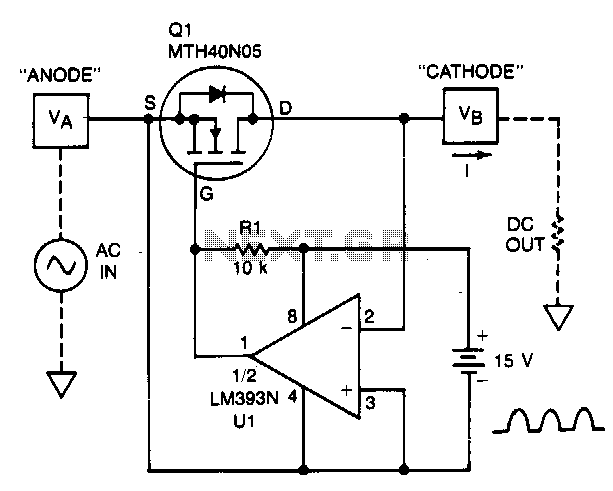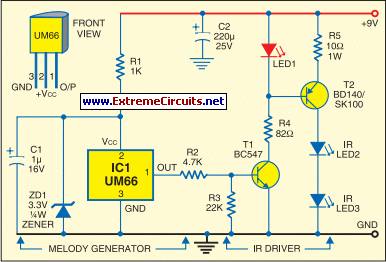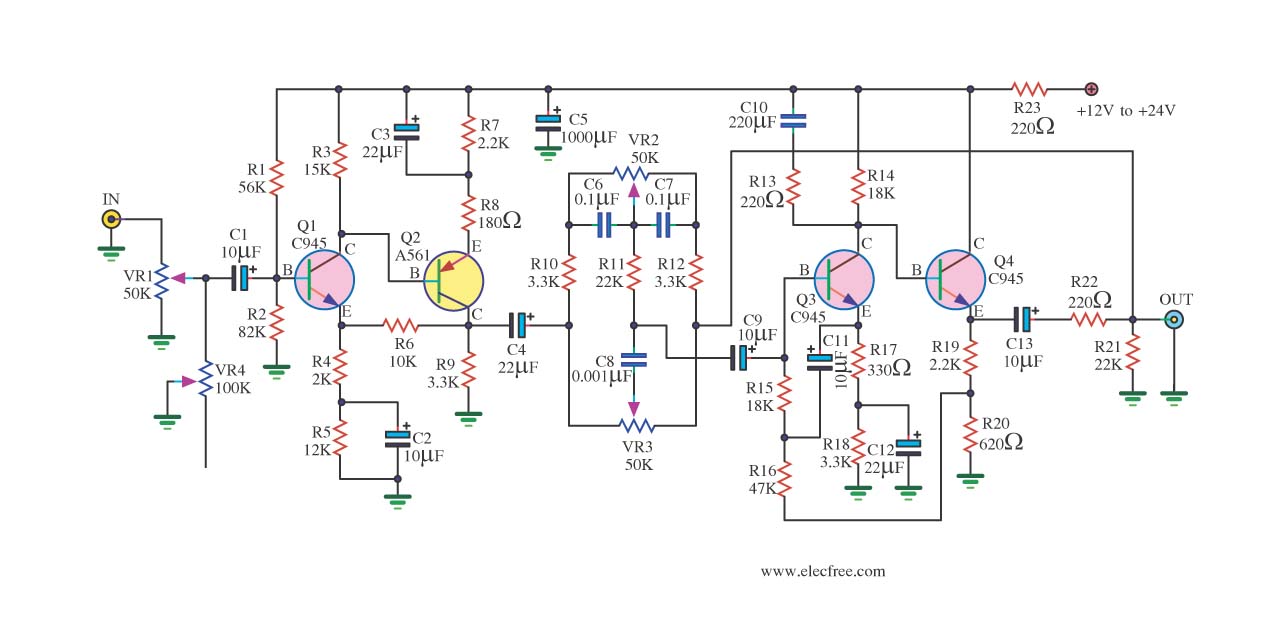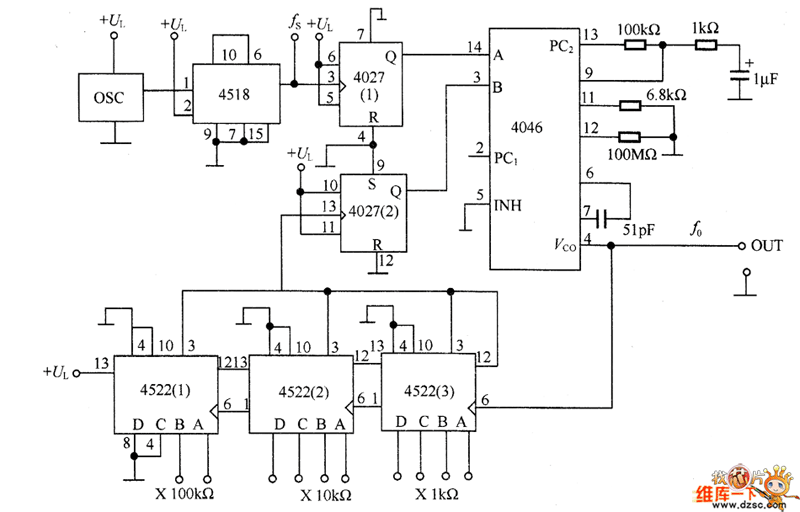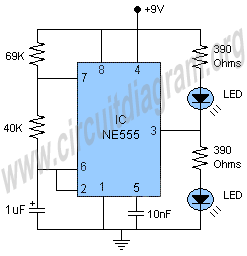
Stereo Noise Limiter Circuit
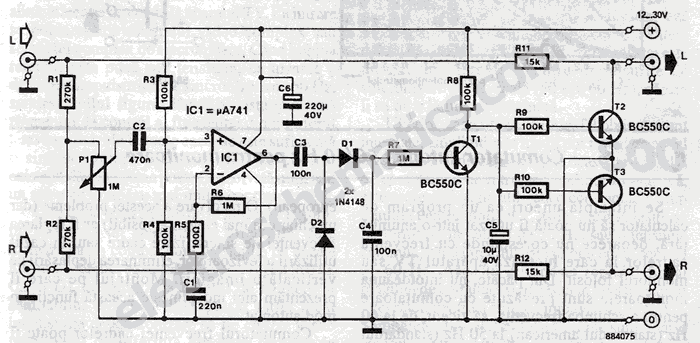
This stereo noise blanker or suppressor attenuates noise by 45 dB when the music signal is low or absent; it functions primarily as a noise limiter. The noise blanker sensitivity...
This circuit serves as a stereo noise blanker or suppressor, designed to significantly reduce unwanted noise in audio signals, particularly when the music signal is low or nonexistent. The primary function of this device is to limit noise levels by an impressive 45 dB, ensuring a cleaner audio output during quieter moments in music playback.
The noise blanker operates by analyzing the incoming audio signal and detecting periods of low amplitude, which are typically associated with silence or low-level audio content. When such conditions are detected, the circuit activates its noise suppression mechanism, effectively attenuating any background noise that may interfere with the listening experience.
Key components of the circuit may include operational amplifiers configured for signal processing, a threshold detection circuit to identify low signal conditions, and a variable gain control to adjust the level of noise attenuation based on the detected signal strength. Additionally, the circuit may incorporate filters to further refine the audio output by eliminating specific frequency ranges where noise is most prevalent.
The design of the stereo noise blanker should also consider the need for minimal signal distortion, ensuring that the quality of the audio signal is preserved while noise suppression is applied. This is critical in maintaining the fidelity of the music being played, allowing listeners to enjoy a clear and uninterrupted audio experience.
In summary, the stereo noise blanker or suppressor is a vital component in audio processing, particularly in environments where noise interference can detract from sound quality. Its ability to intelligently respond to varying audio conditions makes it an essential tool in achieving high-quality audio playback.This stereo noise blanker or suppressor attenuate the noise with 45dB when the music signal is low or null, is just a noise limiter. The noise blanker sens.. 🔗 External reference
This circuit serves as a stereo noise blanker or suppressor, designed to significantly reduce unwanted noise in audio signals, particularly when the music signal is low or nonexistent. The primary function of this device is to limit noise levels by an impressive 45 dB, ensuring a cleaner audio output during quieter moments in music playback.
The noise blanker operates by analyzing the incoming audio signal and detecting periods of low amplitude, which are typically associated with silence or low-level audio content. When such conditions are detected, the circuit activates its noise suppression mechanism, effectively attenuating any background noise that may interfere with the listening experience.
Key components of the circuit may include operational amplifiers configured for signal processing, a threshold detection circuit to identify low signal conditions, and a variable gain control to adjust the level of noise attenuation based on the detected signal strength. Additionally, the circuit may incorporate filters to further refine the audio output by eliminating specific frequency ranges where noise is most prevalent.
The design of the stereo noise blanker should also consider the need for minimal signal distortion, ensuring that the quality of the audio signal is preserved while noise suppression is applied. This is critical in maintaining the fidelity of the music being played, allowing listeners to enjoy a clear and uninterrupted audio experience.
In summary, the stereo noise blanker or suppressor is a vital component in audio processing, particularly in environments where noise interference can detract from sound quality. Its ability to intelligently respond to varying audio conditions makes it an essential tool in achieving high-quality audio playback.This stereo noise blanker or suppressor attenuate the noise with 45dB when the music signal is low or null, is just a noise limiter. The noise blanker sens.. 🔗 External reference
Warning: include(partials/cookie-banner.php): Failed to open stream: Permission denied in /var/www/html/nextgr/view-circuit.php on line 713
Warning: include(): Failed opening 'partials/cookie-banner.php' for inclusion (include_path='.:/usr/share/php') in /var/www/html/nextgr/view-circuit.php on line 713
